How Fast Can Termites Destroy a Home?
How Fast Can Termites Destroy a Home?
Termite Destruction
Each year, termites cause more than 5 million dollars in property damage in over 600 thousand homes just the United States alone. Termite damage can range from minor cosmetic damage to the home to full structural failure. Along with attacking the home itself, termites can even target other wood-based items. Wood is abundant in a substance called cellulose, which attracts termites. With such a powerful appetite for cellulose termites are also rather keen on wooden furniture, paper, and books. But out of all of these types of destruction, what truly qualifies as a destroyed home?
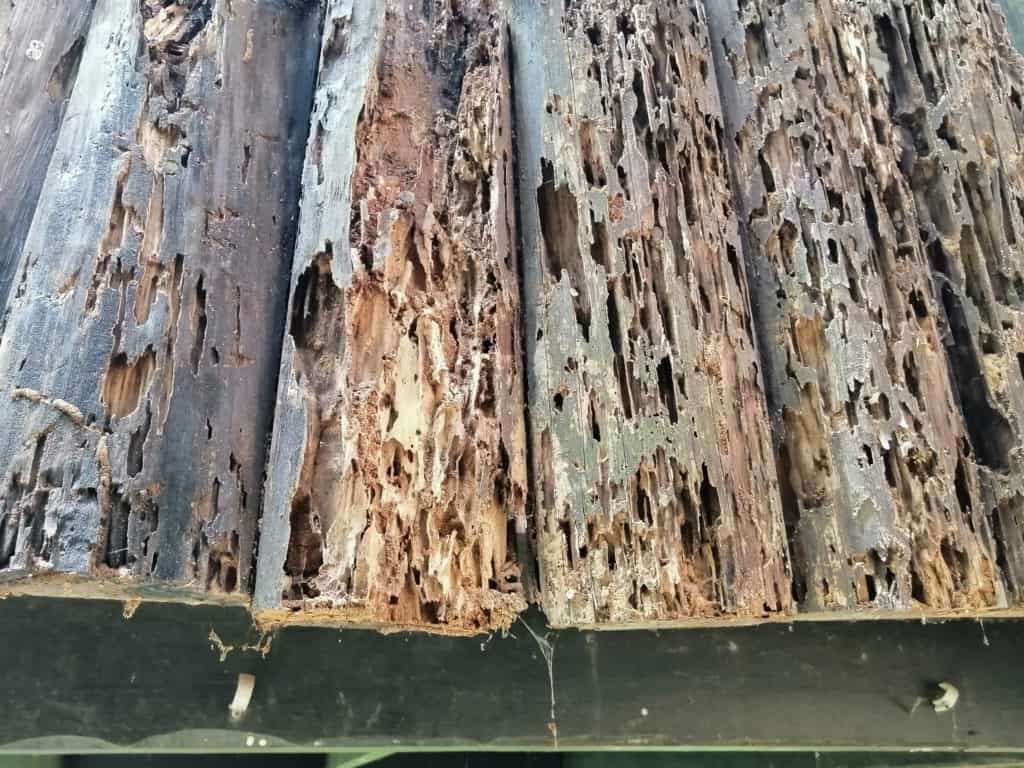
What Qualifies as a Destroyed Home?
In 2018, the National Pest Management Association (NPMA) conducted a test in order to closely observe and study termite destruction to homes. In conjunction with the City of New Orleans Mosquito, Termite and Rodent Control Board, the team of researchers built a mini two-story home replica complete with insulation, electricity, hard wood floors, plumbing, a balcony and even an in-ground swimming pool. The replica was outfitted with high-definition cameras and exposed to a colony of Formosan termites.
Immediately after being exposed to the replica, the termites began to target areas of structural weakness and constructed a series of pathways known as mud tubes inside the walls. They then attacked the floor joists before consuming the drywall. The inhabitation of the termites within the structure also introduced moisture causing both the floors and walls to buckle. Jim Frederick’s, Ph.D., chief entomologist of the NPMA commented on the study, stating that, “this termite colony got right to work, forming mud tubes and turning this dream house into a danger zone. We were surprised to see that the termites acted much like they would in a true-to-size home, finding vulnerabilities in the structure first and then quickly began making their way up from sub-flooring and joists and into the walls.”
This kind of structural damage that puts the integrity of the home at risk more than qualifies as a sufficiently destroyed home.
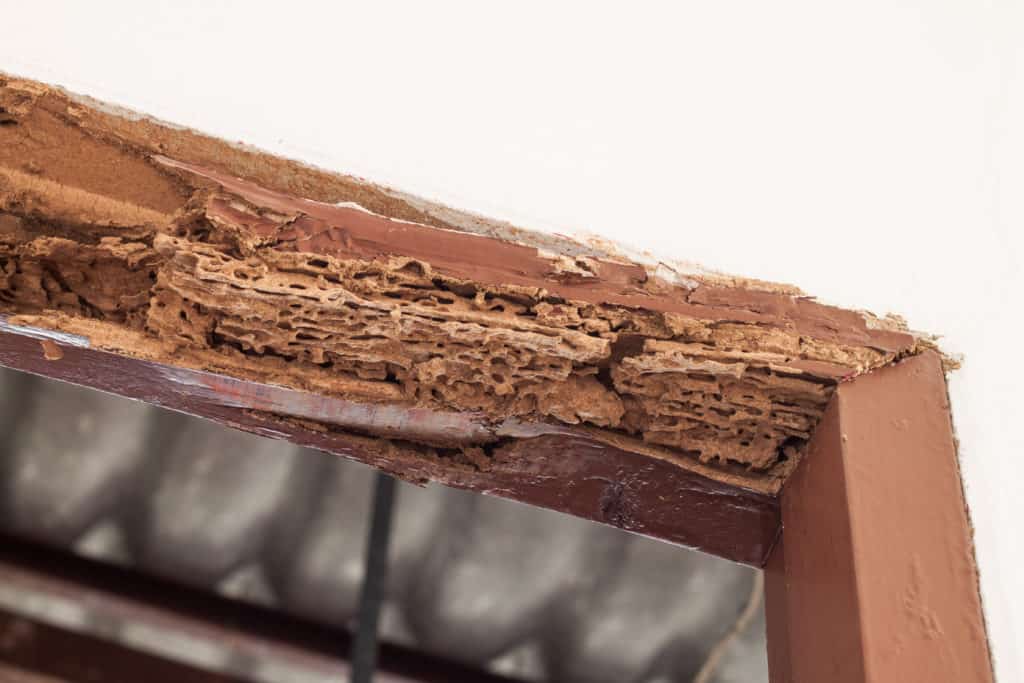
How Fast Do Termites Eat Wood?
A single termite is rarely something to be worried about. The damage that one lone termite could cause is relatively negligible, however, termites are social creatures that live in extensive colonies. Typical termite colonies can consist of roughly 60 thousand termites. Depending on the specific species of termite and the size of the colony in question, termites can consume wood at a rate of up to 1 pound in just 24 hours.
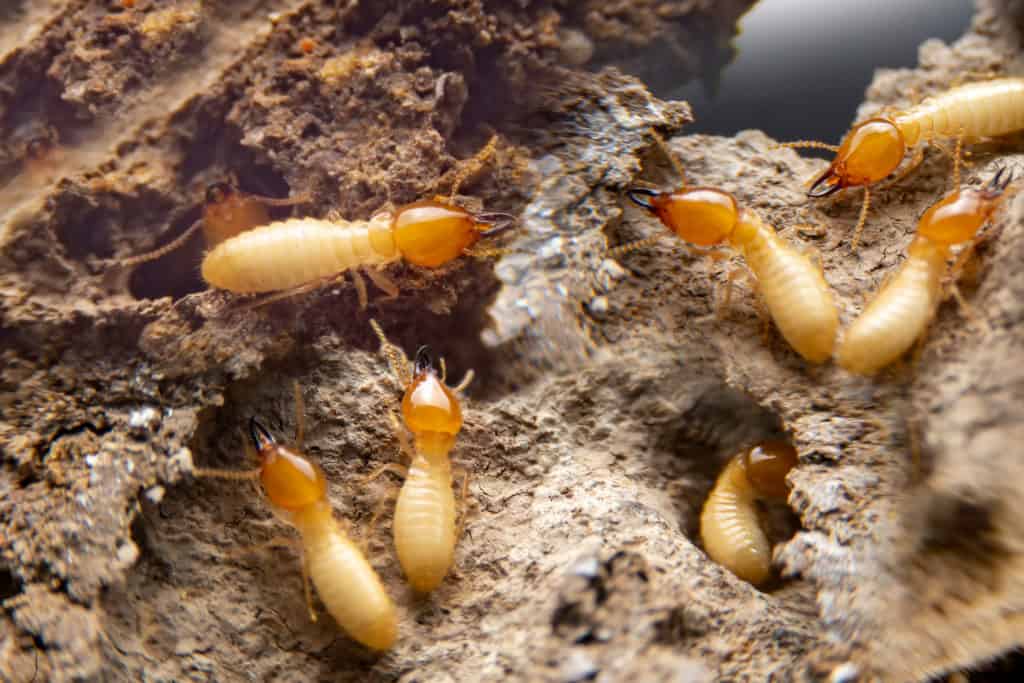
Time vs. Speed
While the speed of termites is rather impressive, the factor that tends to be the downfall for homes in terms of termite damages is actually time. Termites tend to remain very well hidden and, as such, they are able to operate undetected sometimes for even years. During this time, termites will move from the central area in which they’ve created their nest and begin extending outward, growing their complex network of caverns and destruction. So, by the time most people realize they have termites, it is already too late to prevent extensive damage.
Regarding the aforementioned test, Dr. Frederick’s confirms this, explaining that, “on the surface, the house appeared to be in good shape with minimal clues about the presence of termites. However, it was what was happening inside the walls and under the floors that showed the real story… We were amazed when we lifted the sub flooring from the cement slab at the foundation of the home – there were hundreds of thousands of termites living underneath it. If we would have let the termites go for an extended period of time, we expect that the whole house would’ve began to crumble and eventually collapse before our eyes.”
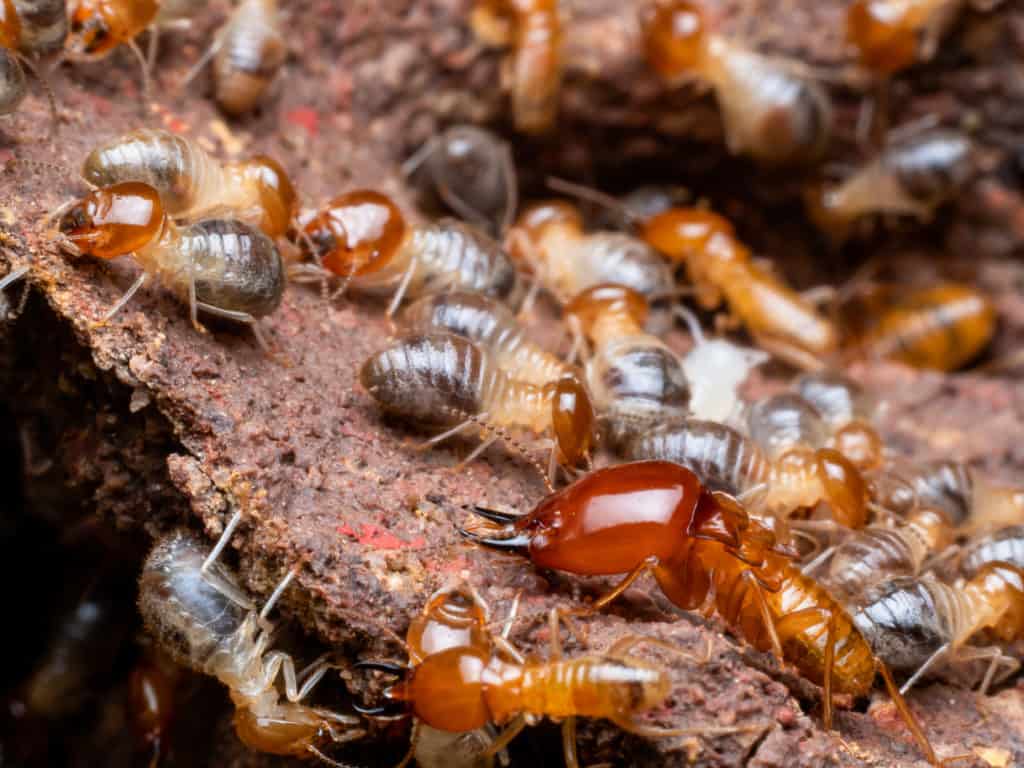
Discovering an Infestation
Termite infestations are more commonly discovered in spring than any other season. This is due to the appearance of swarmers, also known as reproductives. Similar to their distant cousins the ants, these termite reproductives are the only ones within a colony that have wings. They leave their colonies in groups of hundreds or thousands in order to find a new place to mate and form a colony. Following the mating process their wings fall off. The presence of these wings left behind on the ground is one of the key indicators of a termite infestation. Other signs include:
- Frass (fecal pellets)
- Sagging wooden structures
- Uneven or bubbling paint
- Hollow sounding wood structures
- Mud tubes (typically on the foundation of the home)
- Tiny holes in siding or drywall
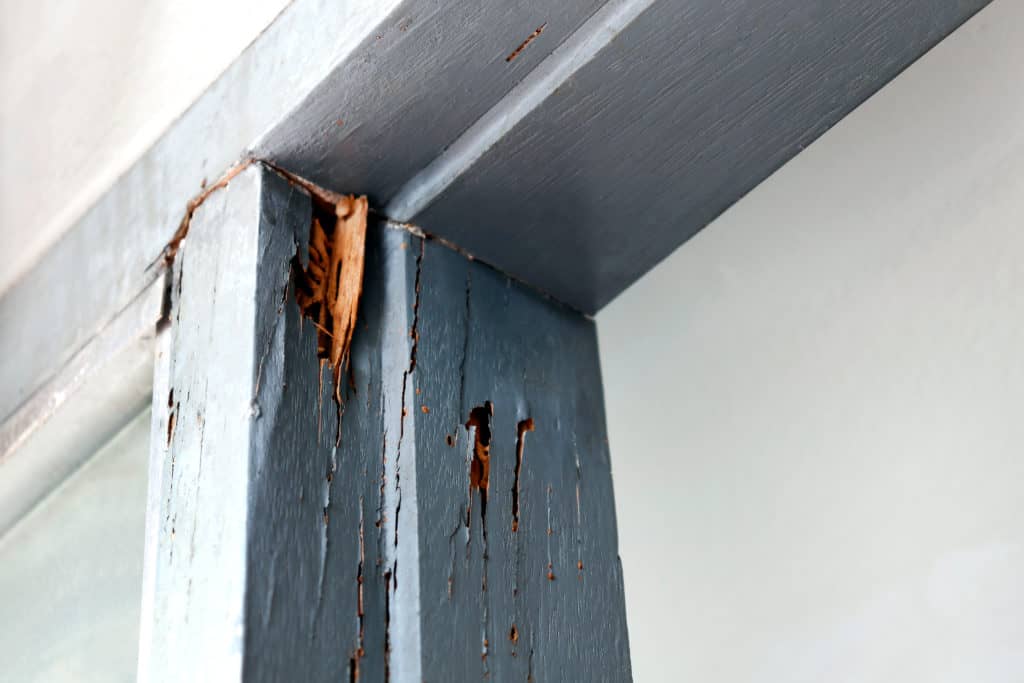
Termite Control
Professional intervention is highly recommended when it comes to termite infestations. Because of how destructive and dangerous the pests can be, it is important to eliminate them quickly and effectively, which requires special equipment and skills. Our technicians have years of experience fighting termites and are equipped with the right tools and knowledge to successfully tackle any termite problem you may have.
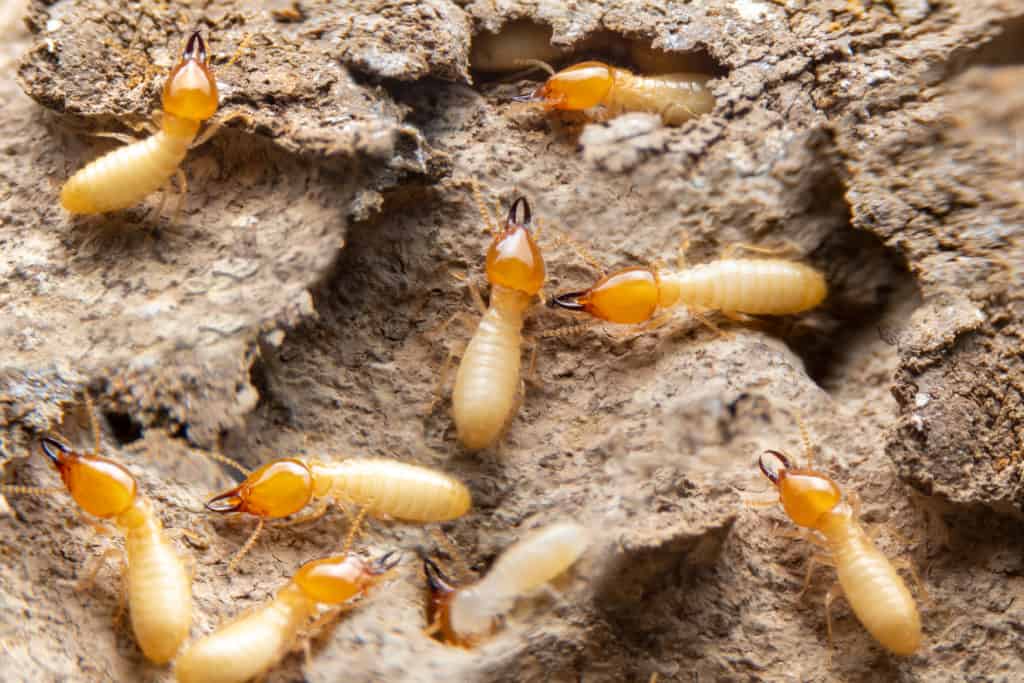
Citations
How Fast do Termites Eat Wood – Avoid Structural Damage (no date) Investment Properties Info. Available at: https://www.investmentpropertiesinfo.com/learn/how-fast-do-termites-eat-wood/ (Accessed: November 2020).
How Long Does it Take for Termites to Cause Extensive Damage? (no date) Architecture Art Designs. Available at: https://www.architectureartdesigns.com/long-take-termites-cause-extensive-damage/ (Accessed: November 2020).
How Much Damage Can Termites Create? (2017) Mighty Mite. Available at: https://www.mightymitetermite.com/blog/how-much-damage-can-termites-create/ (Accessed: November 2020).
This is What 2,000 Termites Eating a Model House Looks Like (2018) Entomology Today. The Entomological Society of America. Available at: https://entomologytoday.org/2018/03/05/this-is-what-2000-termites-eating-a-model-house-looks-like/ (Accessed: November 2020).
Tiny Termite House: How Termites Destroy from the Inside Out (2018) EurekAlert. Available at: https://www.eurekalert.org/pub_releases/2018-06/vc-tth061218.php (Accessed: November 2020).
Termites Are Awful Winter Pests – Here’s Why
Termites Are Awful Winter Pests – Here’s Why Termites Are Awful Winter Pests – Here’s Why Summary: Termites can remain active through winter [...]
How to Maintain a Pest-Free Kitchen for the Holidays
How to Maintain a Pest-Free Kitchen for the Holidays How to Maintain a Pest-Free Kitchen for the Holidays Summary: This blog educates homeowners [...]
Pests That Invade Packages & Boxes: How to Prevent Hidden Infestations
Pests That Invade Packages & Boxes: How to Prevent Hidden Infestations Pests That Invade Packages & Boxes: How to Prevent Hidden Infestations Summary: [...]
Keep Pests Out of Your Holiday Gatherings
Keep Pests Out of Your Holiday Gatherings Keep Pests Out of Your Holiday Gatherings Summary: The holiday season is all about good food [...]
Cold Weather vs. Warm Weather Infestations: How Temperature Shapes Pest Activity
Cold Weather vs. Warm Weather Infestations: How Temperature Shapes Pest Activity Cold Weather vs. Warm Weather Infestations: How Temperature Shapes Pest Activity Summary: [...]
Garden Pests Do Not Hibernate Indoors – How They Attack Houseplants And What To Do
Garden Pests Do Not Hibernate Indoors – How They Attack Houseplants And What To Do Garden Pests Do Not Hibernate Indoors – How They Attack [...]

